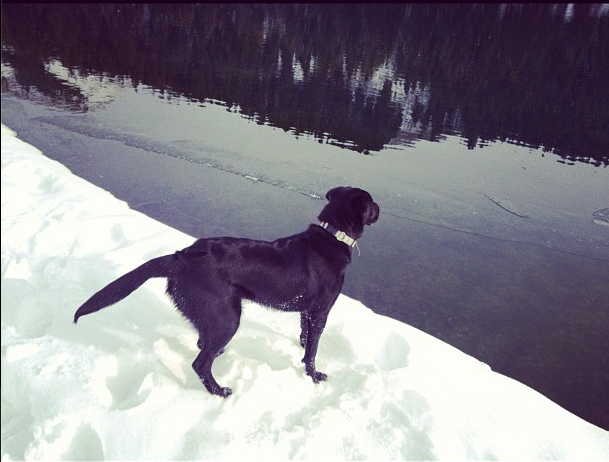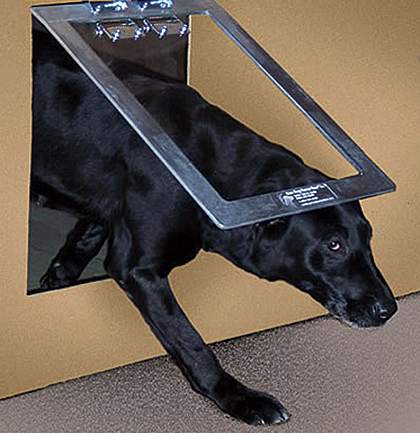Winter is just around the corner and snow will be flying in the next few weeks. Depending on where you live you have probably seen some flurries already. Winter preparations are probably taking up a lot of your time, putting away garden tools, hoses and patio furniture. It is time to start thinking about your animals and in this case specifically your dog. We understand some dogs are either full or part time outside dogs. So what do you need to do to make sure your dog is ready for winter?
6 Simple Tasks That Will Prepare Your Dog For Winter

1. Make a Quick Visit To The Vet: Winter can be hard on dogs if they are not in perfect health. Over years of breeding dogs breeds have been groomed and adapted to withstand the cold well. However if your dog has health issues like…. it can be hard for them to keep warm, and sleep well both very important to your dogs health. Many aliments go unnoticed in your dogs behavior during warmer weather and only rear their head during the cold, when immune systems are weakened. Quality Veterinarians can help make recommendations on whether or not your dog is in the physical condition to spend the winter out doors. Keep in mind that different breeds can handle the cool better that others. This is not only important when selecting what kind of dog you would like but it will help you determine the proper preparation to take.
2. Winter Grooming: Keep your dogs hair maintained so that winter coats can grow in easily. Grooming your dog is a crucial step in winter preparation. Dogs grow thicker fuller coats in the winter to help them keep warm. This coat can be much more full and warm if properly maintained. Depending on the breed you may want to have this professionally done. (Find List Of a Few Things that should be done in grooming)
3. Warm Shelter: While this may seem obvious it is often one of the most common things to over look. Many dog owners pick up a house and think they are covered from then on out. Reality of it is that dog houses need to be looked at and treated every year. Clean it thoroughly to make sure that the sleeping environment is clean. Wind chill factor is one of the most important elements of winter. Positioning a house where the door is out of the wind, and the home has a natural or man made wind break can make cold windy days much more enjoyable for your pet. This is especially important to how well your dog sleeps. Check for leaks, cracks or other issues where either wind or water could potentially get into your dogs home. Keeping your dog dry and warm is at the utmost importance. Depending on the area adding a weather door might be a good idea to help trap body heat and block the wind.
Some homes are designed with doors stock or are even “L” shaped to help keep your dog out of the wind and war.
4. Healthy Weight Gain: Dogs like other animals use body mass as a way to keep warm during the winter. Depending on your dogs weight and health (remember your visit to the vet) you may want to help your dog healthy bulk up by adding a small extra feeding per day. The additional weight gives your dogs boy energy to burn and stay warm during cold days. Remember that this extra amount of food should be monitored and excessive weight can be very harmful to your dog. During the winter months it is necessary to feed your dog a bit more to sustain it the calories burnt by staying warm.
5. Extra Exercise: Exercise is essential to maintaining proper health for your dog. Because of the cold weather and shorter days, many pet owners skip out on regularly exercising their dog. Weakened muscle mass and strength can leave your dog vulnerable to injury and other unhealthy consequences. Looking for things to do with your dog in the winter? Checkout our post here. Not only will spending more time with your dog exercising be good for your dog but you may find a few new hobbies along the way.
6. Understand Temperature Tolerances and Watch The Weather: Knowing how high and low of temperatures your dog can thrive in is vital to keeping your dog safe in the winter. Different breeds can handle different temperatures depending on their coat. Some dogs like Huskies have been bred to work and live in conditions as cold as -75 degrees. While other breeds like Bulldogs were not intended to live in conditions consistently lower than 40 degrees. Watch the weather regularly to see if you will need to bring your dog in. While we recommend sleeping all dogs inside we understand this is not practical for every situation. Setting up an area where your dog can sleep and keep warm inside our home is the best way to keep your dog safe. Some weather channels will send out animal advisory warnings if temperatures will dip below certain thresholds.
Paws and Sharing
As you can see there are a few things everyone must do to prepare their dog for winter. Keep in mind that your breed may require certain tasks outside of what is outlined above. Monitor your dog to see how well it is handling the cold. If your dog is rarely leaving it’s house you should bring it in. Check their paws for frozen ice chunks and ice burns. Their paws are crucial for movement and often the first extremities that suffer from over exposure. Make this winter safe fun and comfortable for your dog by taking a few simple steps. Do you have things you do each winter to prepare your dog for winter? Share your ideas in the comments section below! Know someone who could benefit from this article? Go ahead and share it with a friend on social media.
